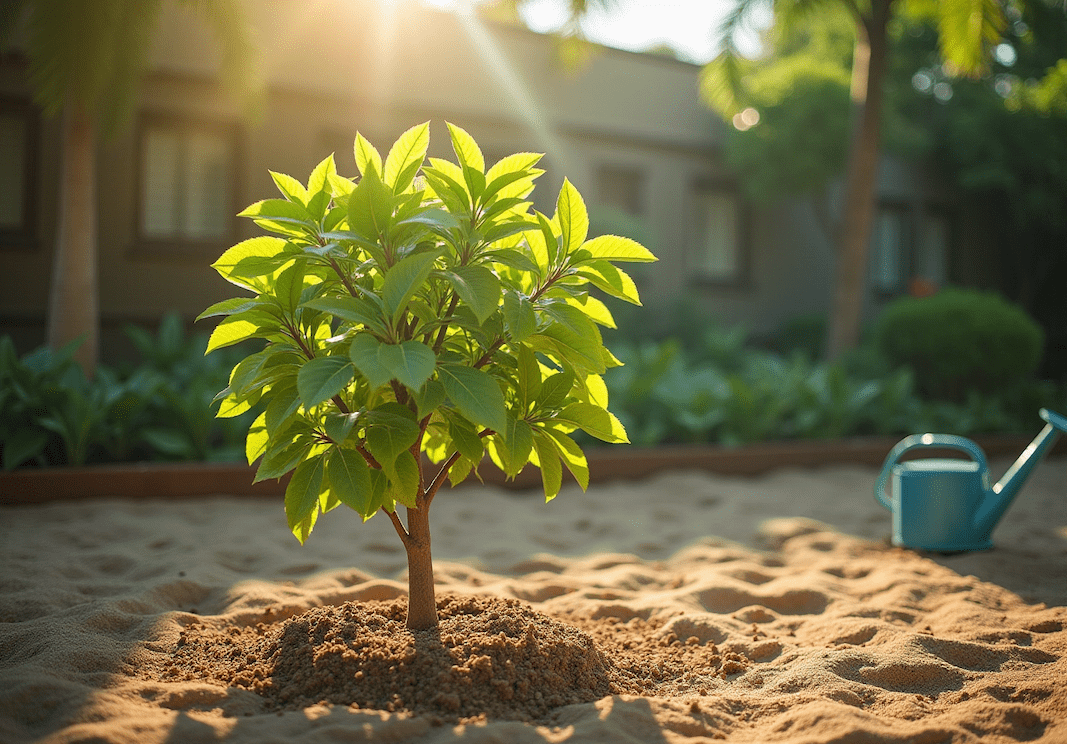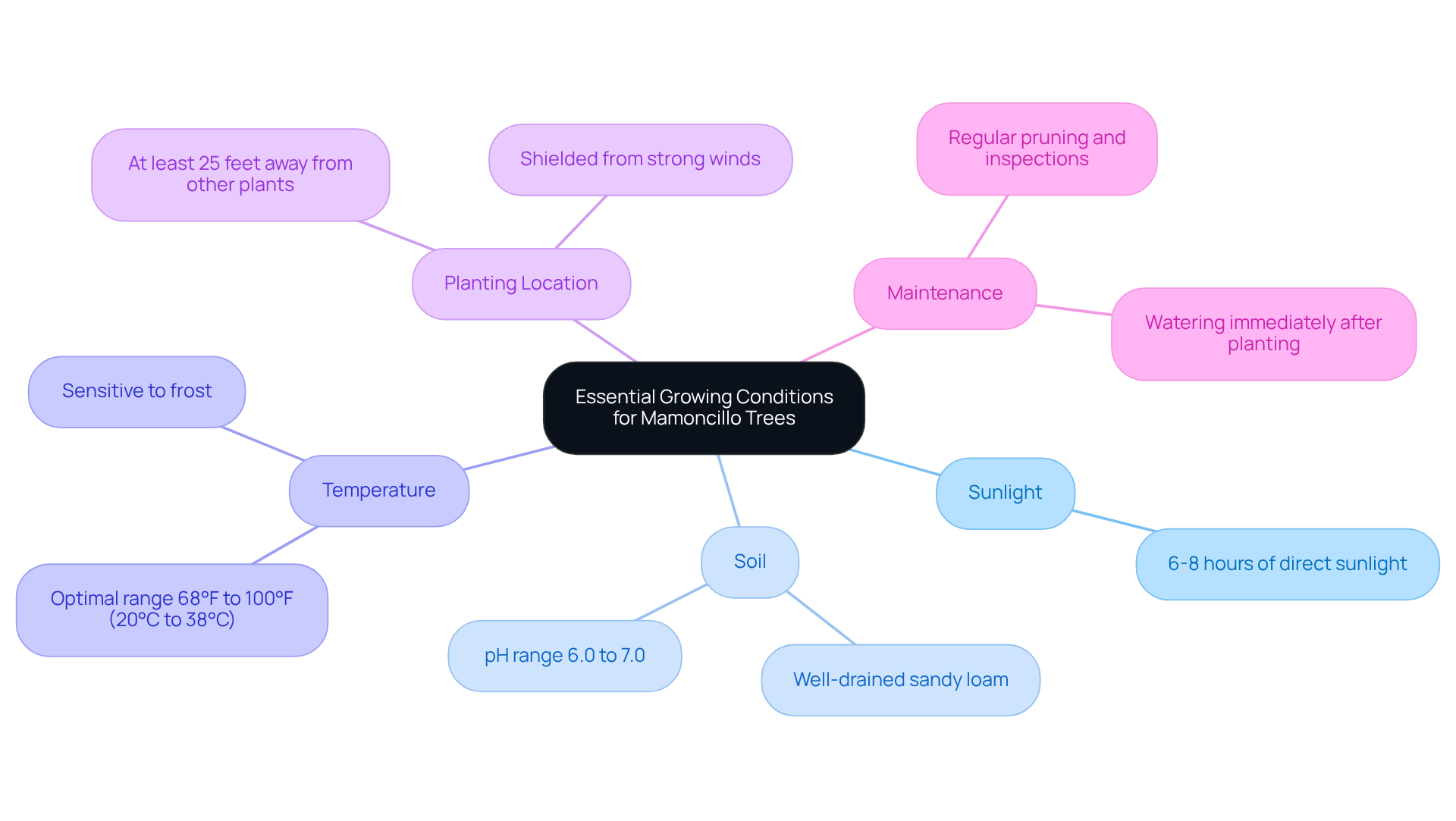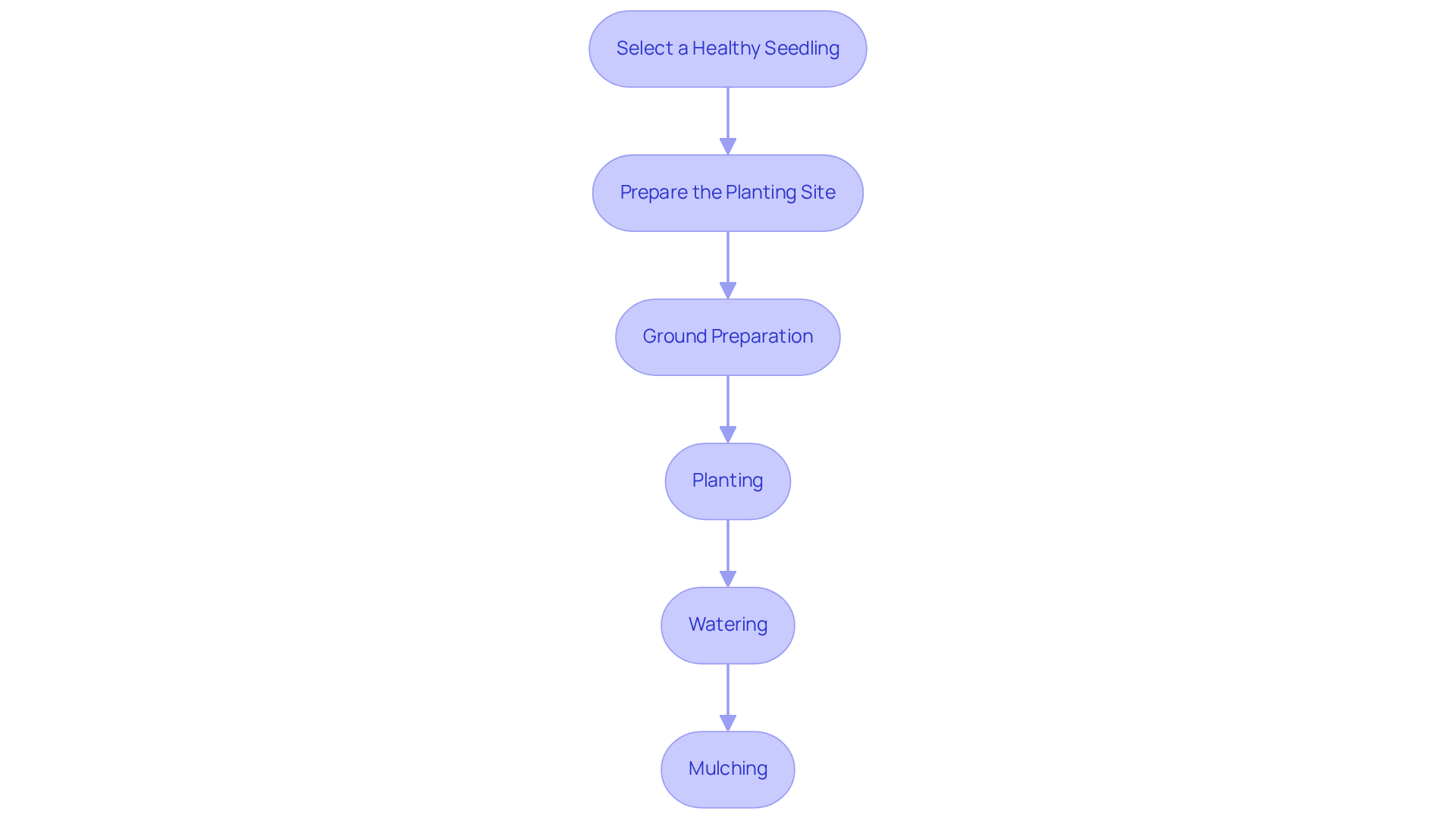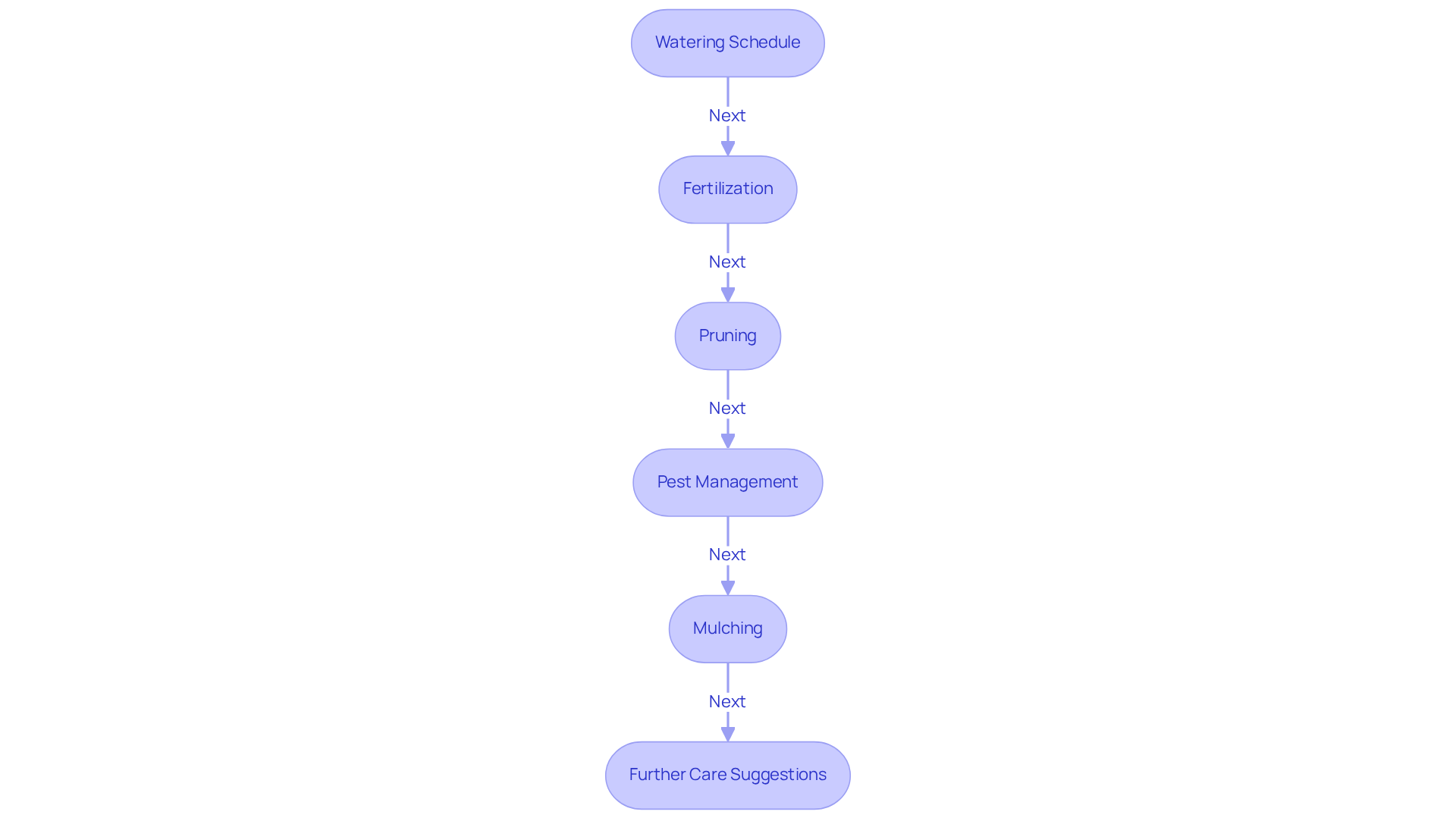
Master the Mamoncillo Tree: Essential Steps for Successful Growth
Share
The mamoncillo tree, recognized for its distinctive fruit and adaptability to tropical climates, presents a rewarding challenge for home gardeners eager to enhance their botanical repertoire. Understanding the specific growing conditions and care requirements is crucial for successfully cultivating this beautiful tree. Many aspiring gardeners encounter the challenge of balancing sunlight, soil, and maintenance to ensure the tree thrives. What are the essential steps to guarantee that the mamoncillo tree not only survives but flourishes in its environment?
Want to grow a Spanish Lime Tree in your garden?
Explore Mamoncillo Tree (Spanish Lime) at Everglades Farm - shipped directly from Florida.
1. Identify Essential Growing Conditions for Mamoncillo Trees
The mamoncillo tree thrives in full sun, needing at least 6 to 8 hours of direct sunlight daily for optimal growth and fruit yield. They favor well-drained, sandy loam soil with a pH range of 6.0 to 7.0. Choosing a planting location that is shielded from strong winds and away from other plants or structures that may block sunlight is crucial. Additionally, these plants are sensitive to cold; they flourish in temperatures between 68°F and 100°F (20°C to 38°C) and must be protected from frost.
To promote healthy growth, it is vital to plant these species at least 25 feet away from other plants and structures to minimize competition for sunlight and resources. Regular maintenance is essential to manage their size and health. As noted by horticulturists, understanding these specific soil and sunlight conditions is vital for effective cultivation, particularly in sandy regions where proper drainage and nutrient availability significantly impact plant health and fruit yield.
The average age of these plants when sold is typically 12 to 18 months, with a height of around 2 feet, making them an ideal choice for home gardeners. With a customer rating of 4.78 out of 5 based on 9 reviews, the mamoncillo tree is celebrated for its quality and adaptability to tropical climates.

2. Plant a Mamoncillo Tree: Step-by-Step Instructions
-
Select a Healthy Seedling: Choose a seedling from a reputable nursery, ensuring it has a robust root system and vibrant foliage. A healthy seedling is essential for successful development and fruit production.
-
Prepare the Planting Site: Clear the area of weeds and debris. Dig a hole that is twice the width of the root ball and the same depth, allowing ample space for root expansion. Ensure that the mamoncillo tree is positioned at least 25 feet away from other plants and structures to encourage healthy growth.
-
Ground Preparation: Enhance the excavated earth by mixing in organic matter, such as compost, to improve drainage and nutrient content. This step is vital for the long-term health of the tree.
-
Planting: Place the seedling in the middle of the hole, making certain that the upper part of the root ball is even with the surrounding earth. Fill in with the prepared earth, gently tamping it down to remove air pockets, which can hinder root growth.
-
Watering: Water the newly planted sapling thoroughly to help compact the earth around the roots. Maintain consistent moisture in the soil for the first few weeks, ensuring the mamoncillo tree receives adequate water without waterlogging, as Mamoncillo species are sensitive to excess water.
-
Mulching: Apply a layer of mulch around the base of the plant to retain moisture and suppress weeds. Ensure the mulch is maintained a few inches away from the trunk to prevent rot and encourage healthy development. Furthermore, take into account environmental elements such as temperature and humidity, as these can greatly influence the care and development of these plants.

3. Maintain and Care for Your Mamoncillo Tree
-
To ensure the health of your mamoncillo tree, it is crucial to maintain a consistent watering schedule. Allow the soil to dry slightly between waterings, and during dry periods—especially from flowering to harvest—ensure the plant receives adequate moisture. A general guideline is to water every 2-3 weeks, adjusting as necessary based on prevailing weather conditions.
-
Fertilization of the mamoncillo tree: Promoting robust growth in your mamoncillo plant requires the application of a balanced fertilizer every 6 to 8 weeks during the growing season. A fertilizer with an N-P-K ratio of 10-10-10 is recommended for optimal results. Young plants should receive 0.25 to 0.50 lbs of complete fertilizer every 8 weeks, while older specimens benefit from regular applications of micronutrients to enhance fruit quality.
-
Pruning: Annual pruning plays a vital role in maintaining the health of your mamoncillo tree. It is important to remove any dead or diseased branches and shape the canopy to improve air circulation and sunlight penetration, both of which are essential for vigorous growth. Young plants should not be pruned in their first year; instead, they should be encouraged to branch out in their second year.
-
Pest Management: Regular inspections of your plant for pests, such as aphids or scale, are essential. Employ organic pest control methods, like neem oil, to manage infestations effectively while protecting beneficial insects in your garden. Additionally, when planting your mamoncillo tree, consider the best practices for soursop plants, including ensuring proper spacing and selecting a location with good drainage to reduce pest problems.
-
Mulching: It is important to maintain a replenished mulch layer to retain moisture and suppress weeds. As the mulch breaks down, it will also improve ground quality, supplying extra nutrients to your plant.
-
Further Care Suggestions: For optimal growth, ensure the ground pH for your fruiting plant remains between 6-7.5. When planting, remove a 3- to 10-ft-diameter ring of grass sod to promote healthy establishment. The Quenepa plant produces fruit with an average pulp content of 51.5%, typically harvested from June through September. For the best outcomes, consider the planting methods used for soursop plants, such as selecting a bright spot and adequately preparing the ground.

4. Troubleshoot Common Issues in Mamoncillo Cultivation
Yellowing leaves on the mamoncillo tree often indicate overwatering or inadequate drainage. To remedy this, allow the soil to dry out between waterings and consider amending it with sand or perlite to enhance drainage. This approach not only improves soil structure but also promotes healthier root systems.
Sudden leaf drop may indicate stress due to environmental changes or pest infestations. It is essential to consistently examine the plant for signs of pests and adjust care methods as necessary to alleviate stress. Regular monitoring can prevent larger issues from developing.
If your fruit-bearing plant is not yielding produce, ensure it receives adequate sunlight and nutrients. Since the mamoncillo tree is dioecious, planting a male specimen nearby can facilitate cross-pollination, thus enhancing fruit production. This simple addition can significantly improve your harvest.
Pest management is crucial; keep an eye out for common pests like aphids and whiteflies. Treat infestations with insecticidal soap or neem oil, following the product instructions for effective application. Timely intervention can safeguard your plants from severe damage.
Fungal issues, such as root rot, can arise from poor drainage. To combat this, improve soil drainage and reduce watering frequency. Remove any affected roots and apply a fungicide if necessary to protect the tree's health. Maintaining proper care is vital for the longevity of your mamoncillo tree.
Conclusion
Mastering the cultivation of the mamoncillo tree necessitates a comprehensive understanding of its specific requirements and optimal growing conditions. By ensuring that these trees receive adequate sunlight, well-drained soil, and appropriate spacing, gardeners can foster healthy growth and maximize fruit yield. The significance of consistent care—including watering, fertilization, and pest management—cannot be overstated in achieving a thriving mamoncillo tree.
Key insights from this guide underscore the critical steps involved in planting and maintaining the mamoncillo tree:
- Selecting a robust seedling
- Implementing effective pest control strategies
- Recognizing common issues, such as overwatering or nutrient deficiencies
Each phase of cultivation plays a vital role in the tree's success. Timely interventions can safeguard the plant's health and productivity.
Ultimately, cultivating a mamoncillo tree transcends the mere act of planting a seedling; it embodies the nurturing of a living organism that requires attention and care. With the right knowledge and practices, gardeners can relish the rewarding experience of watching their mamoncillo trees flourish, leading to a bountiful harvest of delicious fruit. Embracing these essential steps will not only enhance gardening skills but also contribute to a sustainable and fruitful growing environment.
Cultivate Your Own Mamoncillo Tree Today!
Start your journey with Everglades Farm and enjoy a bountiful harvest of delicious tropical fruit.
Frequently Asked Questions
What are the ideal sunlight conditions for mamoncillo trees?
Mamoncillo trees thrive in full sun and require at least 6 to 8 hours of direct sunlight daily for optimal growth and fruit yield.
What type of soil is best for growing mamoncillo trees?
They prefer well-drained, sandy loam soil with a pH range of 6.0 to 7.0.
How should I protect mamoncillo trees from environmental factors?
It is crucial to choose a planting location that is shielded from strong winds and away from other plants or structures that may block sunlight. Additionally, they must be protected from frost as they are sensitive to cold.
What temperature range is optimal for mamoncillo trees?
Mamoncillo trees flourish in temperatures between 68°F and 100°F (20°C to 38°C).
How far apart should mamoncillo trees be planted from other plants and structures?
It is vital to plant mamoncillo trees at least 25 feet away from other plants and structures to minimize competition for sunlight and resources.
What is the average age and height of mamoncillo trees when sold?
The average age of these plants when sold is typically 12 to 18 months, and they are usually around 2 feet in height.
What is the customer rating for mamoncillo trees based on reviews?
The mamoncillo tree has a customer rating of 4.78 out of 5 based on 9 reviews.
Why is understanding soil and sunlight conditions important for cultivating mamoncillo trees?
Understanding these specific soil and sunlight conditions is vital for effective cultivation, particularly in sandy regions where proper drainage and nutrient availability significantly impact plant health and fruit yield.


